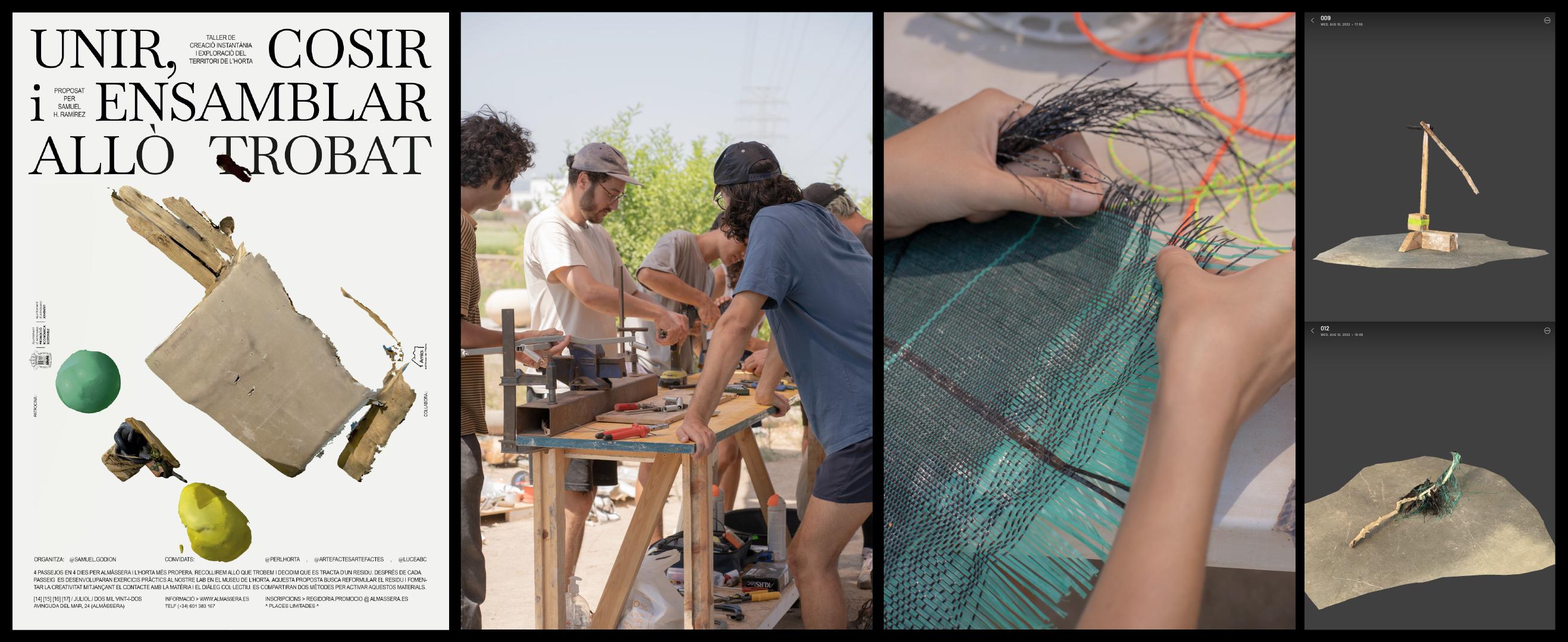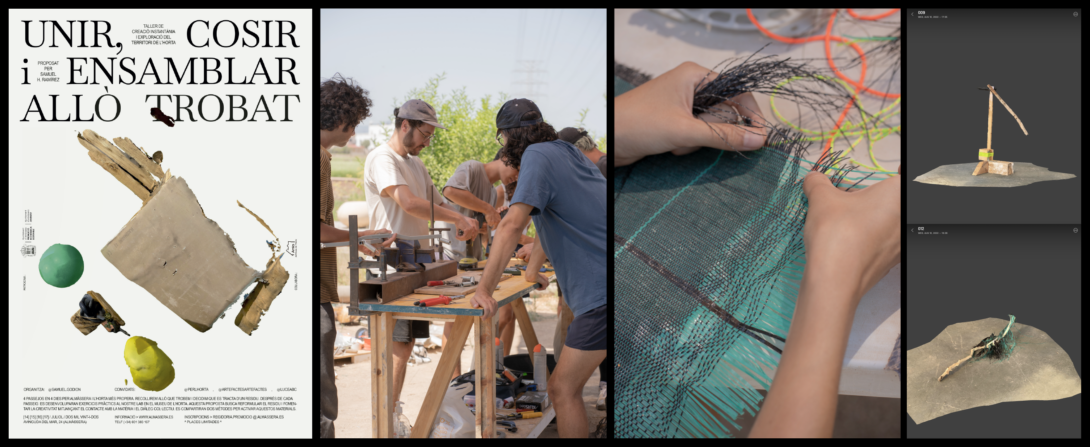Talent
About the project
The Four Square Levels installation is the result of exploring the ability of a rope to bind different elements together and make them function as a unified structure. Understood as a shelf formed by two straps, four 12mm thick recycled birch plywood planks and intermediate supports of 40mm diameter PVC pipe. Four 160mm diameter PVC pipes form the base. A dry construction method, activated by pressing the ratchet, was used to assemble these parts. After a lot of play and experimentation with the straps to understand what they needed and what they could do, I built Four Square Levels. This object was shown at the exhibition “Unspoken Knowledge” at the ETH Zurich in June 2023 and is now part of the virtual collection of the T.A.C.K. study group.
This contemporary dance piece by the choreographer Norberto Llopis is an exercise where the dancers activate the space as machines, as useless machines, machines of desire. To develop the scenography, I designed and produced with the director 7 machines that activate the space. For that I worked with broken electrodomestics giving a second life to all their wires, electronics and motors and taking advantage of all the components and their functionality. (Teatro Círculo, Valencia, 2/12/2022)
In order to share my methodology and approach to the design process with others I created this workshop that took place in the summer of 2022. The aim was to offer a space to reflect and play around the themes of scrap, context and problem solving about material joints. Over the course of 4 days and 4 walks that took place in Almàssera and its immediate surroundings, we collected everything that we understood as waste. We brought all those found materials and worked with them in a temporary atelier where people could cut, fold, saw, wive and think their objects with my help and the other participants. To enrich the experience, I invited the ecological collective Per L’Horta, the researchers Artefactes de L’Horta and the artists LUCE, who came to share their practices and approaches to these issues.
About the creative talent
“I see my practice as an exploration and a process of trial and error, in which experience and friction with the practice are fundamental. The presence of my body is a mechanism for approaching the material world and a tool for learning and design.”
Samuel H. Ramírez (Maó, 1997) is an architect and designer based in Barcelona who seeks to question the normative processes of design by relating object, body and context. Due to his studies in contemporary dance he understands the body as a multisensorial tool of work, exploration and knowledge that plays a central role in his practice. He has studied architecture at ETSA (UPV), ETSAV (UPC), FADU (Montevideo), and currently has a scholarship to study the Master Beyond Product at ELISAVA 2023-24. He has been invited to speak about his work at EINA (Barcelona) and the Faculty of Fine Arts (Valencia). Recently his work has been exhibited at the Departement Architektur (ETH Zürich) during the TACK congress. He has collaborated with different artists, designers and dance directors as LUCE, LEBREL, Norberto Llopis, Quim Bigas or Maria Tamarit developing several objectual and spatial artifacts.
For the past three years Samuel has been researching methods of assembling various post-consumer objects found on the street, using dry construction methods that are activated by tension-compression, without using glue or screws. Samuel focused on the use of these materials and how to combine them to create experimental furniture and functional art pieces. Samuel’s design process is completely open, using found elements and raw materials assembled with simple and accessible systems. DIY techniques and strategies are very present in Samuel’s work. Samuel’s sees them as an emancipatory tool that empowers users to creatively transform their environment by responding to everyday needs with what is available. By using what is available and incorporating the waste generated into the design, we favour the environment, synergies between activities and the circular economy. The use of dry joinery methods allows us to reuse the joining elements and the joined pieces in an infinite number of combinations. Samuel always likes to play with forces and structural systems that deal with the balance of weights between different bodies, and sees this as a direct reference to the plant and animal world, which tends to balance in the wildest and most chaotic ways.





